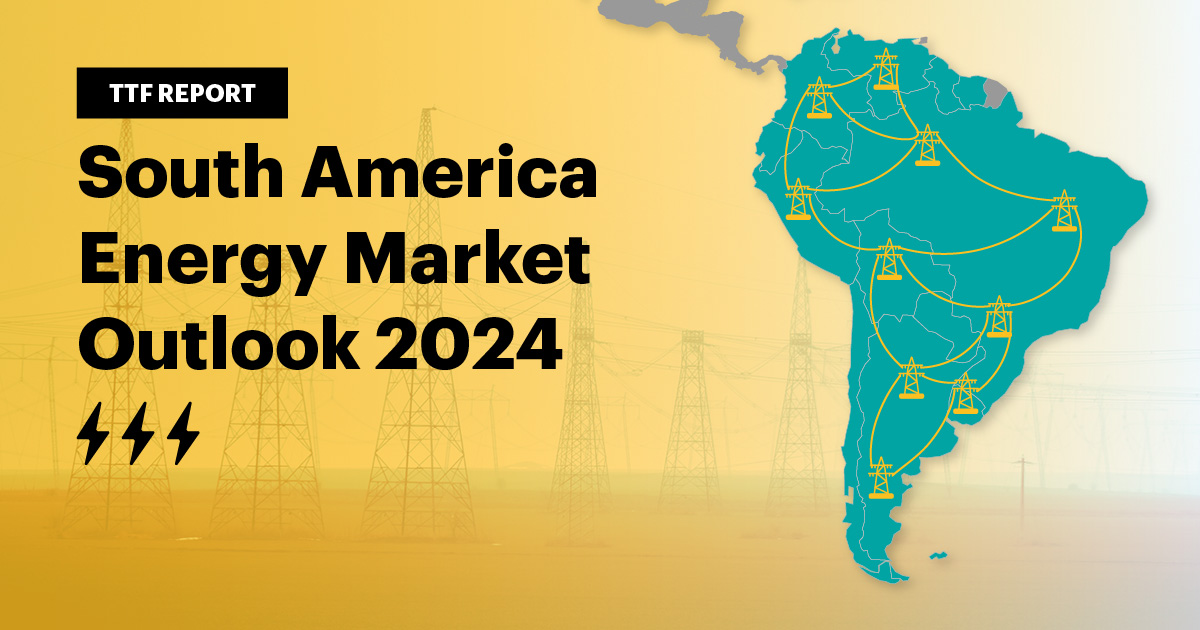
South America’s grid infrastructure is undergoing changes driven by the economic growth and increasing energy demand. The grid infrastructure refers to the network of power stations, transmission lines and distribution systems that deliver electricity. Some countries are in the lead in the modernization efforts while others face challenges. Countries like Chile and Brazil are leading the way in renewable integration and grid modernization. The state of the grid remains mixed with aging infrastructure, underinvestment and regional disparities. South American governments and stakeholders should provide policy support, continued investment and regional cooperation. This will ensure that South America can meet its energy needs.
Renewables integrated into the grid infrastructure
The South American grid infrastructure is dependent on renewable energy sources in the region. The integration of renewable energy sources into the grid is mainly supported by advancements in energy storage and hybrid systems. These help in contributing to a more sustainable and resilient energy infrastructure. Hydropower, solar, wind, biomass, geothermal, energy storage and hybrid systems contribute to the grid infrastructure in South America. Countries like Brazil, Chile, Argentina and Colombia are exploring some of these resources for the grid integration using several technologies. An insulated piercing clamp is a component used to create a reliable and secure electrical connection between a main conductor and a tap conductor. It has the ability to connect wires without stripping insulation.
Impacts of climate change on the grid
South America is susceptible to climate change given its geographic locations and climatic conditions. Climate change influences the operational reliability and resilience of the grid. This is because it affects hydropower reliability, increases the risk of extreme weather events and renewable energy resources. Additionally, the region must address these challenges by investing in infrastructure modernization, diversify energy sources and implement adaptation measures. This can help South America to enhance the resilience of the grid infrastructure and ensure a more reliable energy future. Here’s how climate change impacts South America’s grid infrastructure.

- Droughts and water availability – most of South American countries like Brazil, Colombia and Paraguay rely on hydropower production. Climate change-induced droughts and reduced rainfall can lead to lower water levels. This water level drop greatly impacts hydropower generation. Fluctuations in water levels can affect the efficiency of hydropower plants and increase maintenance needs.
- Storms and flooding – increased frequency and intensity of extreme weather events can cause damage to grid infrastructure. The costs of repair and restoration of damaged infrastructure can be high and can lead to decreased grid reliability.
- Heatwaves – these can lead to spikes in electricity demand due to higher use of air conditioning and cooling. This can strain the grid and intensify issues related to energy supply and stability. High temperatures can affect the efficiency of transmission lines. This in turn leads to increased energy losses.
- Solar and wind variability – solar and wind energy rely heavily on the weather patterns. Climate change can alter solar irradiance and wind patterns which affects their efficiency and output. This variability needs a robust grid infrastructure management and energy storage solutions. This is to ensure a stable and reliable power supply.
Heat resistant transmission lines in South America’s grid infrastructure
Use of heat resistant transmission lines in South America’s grid infrastructure due to the extreme heat conditions in the region. They help enhance grid resilience, reduce energy losses and increase transmission capacity. Heat resistant transmission lines also help ensure reliable electricity supply in the face of growing environmental challenges. Common types include high-temperature low-sag conductors (HTLS) and aluminum conductor composite reinforced (ACCR). These conductors improve grid resilience, enhance reliability and have higher carrying capacity. Here’s how the heat resistant transmission lines are implemented in South America.

- Brazil – Brazil is investing to expand its grid to connect remote renewable energy sources. It has started to incorporate HTLS and ACCR conductors in regions with high temperatures. This also helps in reducing transmission losses in the country.
- Chile – the Atacama Desert is one of the hottest and driest place ideal for solar energy generation. Chile uses the heat resistant transmission lines to transport electricity from solar farms to the national grid without losses.
- Argentina – the country faces high temperatures which can impact the efficiency and reliability of transmission lines. They are hence adopting heat resistant technologies in its broader grid modernization efforts.
